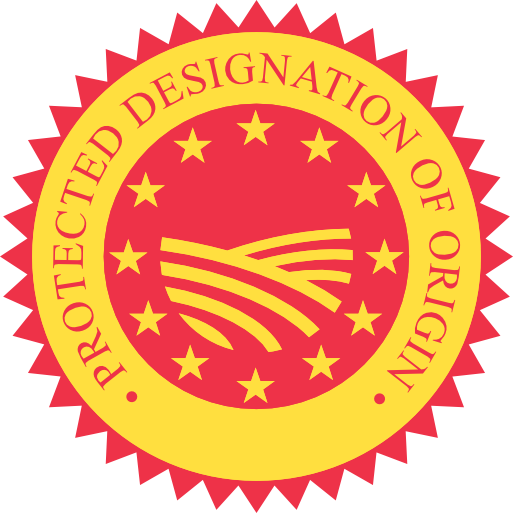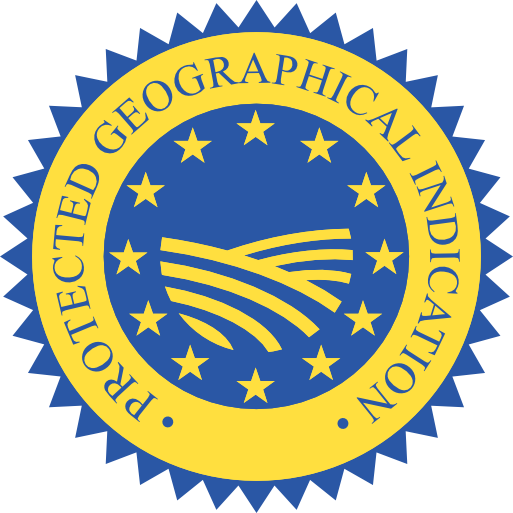PDO Montsant
Website: www.domontsant.com
History:
The relationship between this territory and the vineyard and wine goes back a long way. Wine was made in the territory during the time of the Roman Empire. Remains of a Roman settlement have been found in the village of Marçà, and among the pieces discovered are wine amphorae that were most likely intended for the consumption of the great Tarraco.
But it was not until the Middle Ages that the first expansion of the vineyard took place in the villages and territories that are currently part of the DO Montsant, and more specifically with the conquest and repopulation of the area (until then it was in hands of the Arabs) by the Christians.
It was then, during Christianization, at the hands of the Carthusian monks of Scala Dei, when cultivation became inseparable from this land. They provided new cultivation techniques that boosted the growth of the vineyards throughout the area. In fact, the establishment of the Carthusian Monastery (1194) was important enough to give its name to an entire geographical region: Priorat, lands of the prior.
In the villages that are part of the DO Montsant, wine production has been a constant over the centuries. Trade with foreign countries through the nearby city of Reus contributed to its international successes. The heyday of this trade came in the 19th century, when Montsant wines were exported to France, destined mainly for the merchants of Bordeaux and Roussillon. Some of the wines of today’s DO Montsant were awarded at the great Universal Exhibitions of the 19th and early 20th centuries.
At the end of the 19th century, the phylloxera plague triggered a long crisis in the sector that eventually led to the emergence of the first cooperatives. They were in the early twentieth century, and their formation helped maintain cultivation in the area and prevent depopulation. These cooperatives include the two modernist cathedrals of Falset and Cornudella, both from 1919, and still active.
The first Spanish Wine Designations of Origin were recognized in 1932, in the Wine Statute promulgated by the state government, which included the DO Tarragona.
Within the limits of the DO Tarragona, the “Falset subzone” was differentiated, which occupied the current territory of the DO Montsant.
Finally, taking into account the specific characteristics of our wines and the importance of cultivating the vineyard in the area, in 2001 the creation of DO MONTSANT was approved in recognition of this long wine heritage.
In these 20 years, DO Montsant, the most recent catalan denomination of origin, has been a great turning point for the area with a modernization of its historic cooperatives and the emergence of new private and family initiatives, which spread the name from Montsant to more than 40 countries as a wine region that is committed to its indigenous varieties (different Grenache, Carignan, Macabeo) and sustainable viticultural practices with a marked respect for the landscape.
Description:
Location
The DO Montsant is made up of sixteen little villages, mainly located in the comarca (county) of Priorat; some of their vineyards are located in the neighboring comarca of Ribera d’Ebre, reaching an area of vineyards around 1.900 hectares (4.700 acres).
The land of the DO Montsant forms a semi-circle of mountainous terrain which on paper makes a rather interesting shape. To the North, our J (which lends its name to the DO) and La Llena mountain range which are joined onto the leafy Prades mountain range. To the east, the boundaries are marked by the Argentera, Mola de Colldejou and Llaberia mountain ranges or Catalan Coastal Mountain Ranges which augur the closeness of this part to the Mediterranean sea. They face towards La Figuera and the Tormo mountains which are on the other side of the appellation. To the south, the land broadens and opens up towards the Ebro river valley, where the rivers of Siurana and Montsant converge. These two rivers and that of Capçanes creek are the main water sources of our vineyards.
The DO Montsant relief is varied and mountainous. In some areas its hills are rolling, especially to the south. The vineyards are located at between 50 metres above sea level inthe lowest areas, up to 700 metres in the highest areas.
Climate
The climate of the DO Montsant is marked mainly by the rugged profile of the mountains, the influences of the river Ebro and sea winds. That is why, despite being a Mediterranean climate, it is marked by a certain continentality. On the other hand, given the orography of the area, you can find countless microclimates that make each wine plot have special characteristics.
In general, winters are cold and summers dry and hot, with average minimum temperatures of 9ºC and average averages of 21ºC. As for rainfall, they are especially in spring and autumn, distributed between 400 – 700 liters/m2, depending on the village due of the complexity of the orography.
In summer, the humid winds that come from the sea begin to blow in the afternoon. This contribution of humidity helps the vines during the dry ripening season. This climate is very suitable for the production of fortified wines grapes slightly overripe from garnatxa, carinyena and whites.
Vineyards, people and wineries
In the DO Montsant there coexist from large cooperatives to family initiatives, through private wineries of various sizes and producers who make wines from their own vineyards using the facilities of other wineries. Despite their structural differences between them, they all share the same goal: to make quality wines that speak of this land.
The wines of the DO Montsant are the result of a centuries-old tradition and current academic knowledge. Artisan products in which the hand of man intervenes in the whole production process, a process that is the result of an inalienable balance between the field and the winery.
The Wines. Loyalty to the origin
Montsant wines are true to their origins, resulting in as unique wines that speak of how a climate of contrasts, the complex orography, the variability of soils, the grape varieties and the hand of man to influence give life to unique wines, with identity. The wines of the DO Montsant bring diversity and enrich the DO, while defining it globally.
Red wines are most common to DO Montsant, is that, traditionally, these lands have always been land of red wines. More than 90% of grape production corresponds to red varieties, including Garnatxa and Carinyena, for being the ones that best adapt to the conditions of the DO and the ones that best convey their identity. Both give full-bodied wines, very suitable for aging. Garnatxa Negra has a very sensual aromatic profile, of great complexity, and produces well-structured wines. For its part, Carinyena is aromatically very intense and produces wines of moderate grade and with very good acidity.
As for white wines are made almost exclusively with both variety is traditional in the area: Garnatxa Blanca, with more body and structure, and Macabeu, which gives finer wines. Both are distinguished by their silky, structure and elegant and subtle aromas.
On the other hand, generous wines have a long tradition in this territory. In the old days, when wineries were familiar, it was customary to have a barrel of rancid wine and another of sweet wine.
Steps to the Future. Knowledge, innovation and sustainability
Zoning study
The zoning study of the DO Montsant, started in 2008 and is a process of self-knowledge of the DO in order to deepen the link between wine and the territory, to strengthen its identity and exploit its wine-growing potential.
From the analysis of different parameters such as climate, landscape, soils, and the phenological cycle of Garnatxa and Carinyena vineyards, the segmentation of the DO Montsant has been carried out in 6 different areas. These first conclusions will be fed by new studies to finish defining the identity of the DO.
LIFE Priorat+Montsant
For the last thirty years, the Priorat region has become a model of international success in the production of high quality wines under the auspices of the DO Montsant and the DOQ Priorat , thanks to the careful elaboration of its wines and the use of their viticultural, natural and cultural heritage.
However, the wine sector of the region, consisting of 170 wineries belonging to these designations of origin, faces different challenges related to the sustainability of cultivation and winemaking, as well as the conservation of an environment unique natural and reducing the environmental impact on the quantity and quality of wine produced. And this, in addition, in a context of growing international competition and an increasingly demanding and environmentally responsible market.
To solve these challenges, the LIFE PRIORAT + MONTSANT project was born, funded by the European Commission, with the main objective of developing and demonstrating a model of sustainable large-scale wine production in the Priorat region, through the application of a set of methodologies for the efficient use of natural resources throughout the value chain, which can later be reproduced in other wine regions of the European Union.
NUMBER OF WINERIES: 60
SURFACE AREA (acres): 4.705,35 ACRES
PRODUCTION VOLUME: 70.000 Hl ; 6,5M BOTTLES
MAIN VARIETY (TOP3): Garnatxa negra, Carinyena, Garnatxa blanca, Macabeu
TERRITORY (TYPE OF SOIL, LANDSCAPE):
Landscape
DO Montsant winegrowers and wineries have successfully combined human activity with landscape preservation. The agricultural landscape has been one of the region’s most precious assets for centuries. It tells of the farmers, who have worked this land in very much a positive way. Today’s modern world increasingly appreciates natural areas which have not been destroyed by lack of respect for nature or by aggressive actions. This landscape has been little exploited and now the visitor can discover a mosaic of small plots that combine the vineyards of DO Montsant with plots of olive, almond, hazel and cereals; it’s a synonym of a job well done. It is an example of quality and sustainability.
These values define DO Montsant wines, values which make us proud and which we always transmit to those who wish to get to know them.
The DO Montsant, together with the DOQ Priorat head up the county’s UNESCO candidature to declare the area a World Heritage Site. The goal is to achieve international recognition of this agricultural model that seamlessly combines a long-standing Mediterranean agrarian tradition, with creativity and innovation without losing sight of the future.
Soils
If we talk about soils, we have to understand Montsant as a rich mosaic of different lands. Although each zone is dominated by one type of soil, it is easy to find within these certain intercalations of other types of soils. And it is that often, in the DO Montsant, a walk by any vineyard reveals to us how capricious the geology in this territory has been. All this complexity and richness lead to talk today of a classification of six families of soils in Montsant: granite, slate, clay, limestone, loess and limestone-clay.



